How to Title Your Work of Art
Brainstorming Ideas and Themes
-
 How to Title Your Work of Art Picture 1 Make a list of themes central to the artwork. Brainstorm a list of ideas that reflect what your artwork is about. It can be simple, such as 'trees' or 'girl,' but it can also be thematic or subconscious, such as 'friendship' or 'childhood.' Think about what the meaning of the artwork is, and how the title can convey that meaning.
How to Title Your Work of Art Picture 1 Make a list of themes central to the artwork. Brainstorm a list of ideas that reflect what your artwork is about. It can be simple, such as 'trees' or 'girl,' but it can also be thematic or subconscious, such as 'friendship' or 'childhood.' Think about what the meaning of the artwork is, and how the title can convey that meaning. -
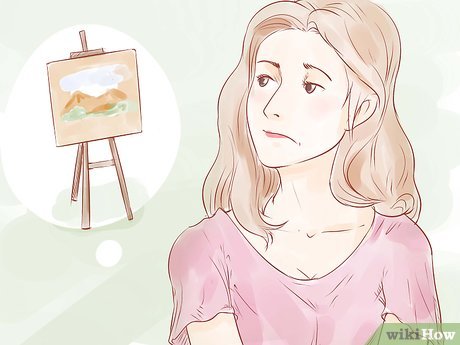 How to Title Your Work of Art Picture 2 Identify your motivation behind the artwork. What drove you to create this piece of art? Reflect on your feelings about this artwork and what you'd like to share with your audience. How does the artwork make you feel? Identify the story you want to tell.
How to Title Your Work of Art Picture 2 Identify your motivation behind the artwork. What drove you to create this piece of art? Reflect on your feelings about this artwork and what you'd like to share with your audience. How does the artwork make you feel? Identify the story you want to tell. -
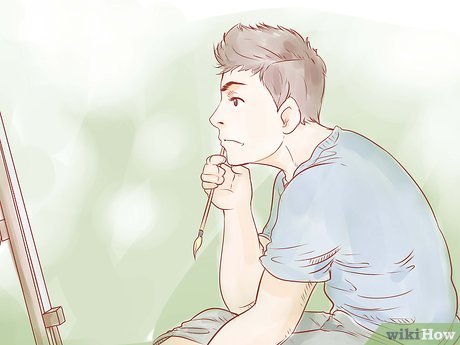 How to Title Your Work of Art Picture 3 Pinpoint the artwork's focal point. With artwork, there are certain areas of the piece that the artist wants the audience to see first or to pay the most attention to. Think about the focal point of your artwork. What do you want people to focus on when they observe your artwork? Naming your artwork after the focal point can help people understand your artwork better.[1]
How to Title Your Work of Art Picture 3 Pinpoint the artwork's focal point. With artwork, there are certain areas of the piece that the artist wants the audience to see first or to pay the most attention to. Think about the focal point of your artwork. What do you want people to focus on when they observe your artwork? Naming your artwork after the focal point can help people understand your artwork better.[1]- Johannes Vermeer's 'Girl with a Pearl Earring' draws attention to the small jewel in the ear of the subject.[2]
-
 How to Title Your Work of Art Picture 4 Consider what audiences need to know. Oftentimes, titles help audiences understand what they're looking at. Titles can give tools to the audience to know how to interpret the piece. What do you want audiences to know about your artwork?[3]
How to Title Your Work of Art Picture 4 Consider what audiences need to know. Oftentimes, titles help audiences understand what they're looking at. Titles can give tools to the audience to know how to interpret the piece. What do you want audiences to know about your artwork?[3]- Do you want your title to direct the viewer towards a particular interpretation? For example, a work of art of a dog sitting on a beach can be interpreted in a number of ways. But if you title the picture, 'Abandoned,' the viewer will assume that the dog has been abandoned on the beach. If you title the picture, 'Best Friend,' people will react differently to the dog's presence.
- Some artists prefer not to tell the meaning of their artwork, deliberately leaving the title ambiguous.
-
 How to Title Your Work of Art Picture 5 Make the title meaningful for yourself. No matter your reasoning for choosing a particular title, make it meaningful for you. You are, after all, the artist, and the artwork is made primarily for yourself. Some artists like to have titles that convey certain meanings so that they remember certain details about the process of making the artwork, what inspired the artwork, and so on.
How to Title Your Work of Art Picture 5 Make the title meaningful for yourself. No matter your reasoning for choosing a particular title, make it meaningful for you. You are, after all, the artist, and the artwork is made primarily for yourself. Some artists like to have titles that convey certain meanings so that they remember certain details about the process of making the artwork, what inspired the artwork, and so on.- Frida Kahlo titled one painting, 'I Belong to My Owner,' during a tumultuous affair with exiled communist Leo Trotsky. The painting of wild flowers in a vase symbolizes her overwhelming love for Trotsky coupled with her need to remove herself from this affair.[4]
0 / 0
Part 1 Quiz
When might you title a work of art based on the art's focal point?
Not quite! If you want the audience to know something about your artwork, think of what you want them to know, and how you can create a title that would lead the reader to that interpretation. For example, a dark room can be interpreted as lonely, but it can also be interpreted as peaceful. Depending on what interpretation you want, modify your title accordingly. Click on another answer to find the right one...
Not exactly. If you want the audience to understand the motivation behind a particular piece of art, think about how the artwork makes you feel. What kind of story do you want to tell? Once you've thought this through, you can create a title that reflects that motivation! Choose another answer!
Correct! If there's a small detail in your artwork that you think is the most important part, highlight that detail in your title. For a famous example of such a title, look to Pieter Bruegel the Elder's painting "Landscape with the Fall of Icarus." Read on for another quiz question.
Want more quizzes?
Keep testing yourself!Finding Inspiration
-
 How to Title Your Work of Art Picture 6 Look for inspiration in poems or quotes. Using parts of your favorite poem or quote can be an interesting and suitable title for your artwork. Similarly, you could choose a passage from a book. These should not, however, be too lengthy. Choose something that is a short phrase. Also, choose something that adds to the artwork's meaning, not something completely random that doesn't mean anything.
How to Title Your Work of Art Picture 6 Look for inspiration in poems or quotes. Using parts of your favorite poem or quote can be an interesting and suitable title for your artwork. Similarly, you could choose a passage from a book. These should not, however, be too lengthy. Choose something that is a short phrase. Also, choose something that adds to the artwork's meaning, not something completely random that doesn't mean anything.- There shouldn't be copyright issues with this approach unless you are using a lengthy quote. If you have just a few words from a poem or book and you are appropriating it in a new way, this would likely be protected by fair use guidelines.[5]
- Pam Farrell titled her painting, 'Seasick Sailor,' which were words that she heard in song by both Beck and Bob Dylan.
- David White used titles of books and movies such as 'The Man Who Knew Too Much' and 'The Man Who Would Be King' and repurposed them into titles for a series of paintings. One of his paintings is, 'The Man Who Was Tired of Perpetual War,' naming the action after the character in his painting.[6]
-
 How to Title Your Work of Art Picture 7 Ask for suggestions. Talk with family, friends, or other artists to get suggestions on a good title. They may have some interesting or inspirational ideas that you hadn't thought of.
How to Title Your Work of Art Picture 7 Ask for suggestions. Talk with family, friends, or other artists to get suggestions on a good title. They may have some interesting or inspirational ideas that you hadn't thought of.- Alternately, throw a 'titling party' with other artists or friends. Throw a party and display the artwork. Ask everyone to give suggestions for a title. Some titling parties demand that all guests stay until suggestions are made and a title is chosen.
- Painter Jackson Pollock would often only number his paintings, such as 'Number 27, 1950,' but the art critic Clement Greenberg would give the paintings poetic names, such as 'Lavender Mist' or 'Alchemy,' in order to differentiate among them.[7]
-
 How to Title Your Work of Art Picture 8 Pay homage to an artistic influence. If your artwork or artistic style is particularly influenced by a certain piece of art or artist, you could consider naming your work after that. Paying homage to your influences can be a good source for artwork titles.
How to Title Your Work of Art Picture 8 Pay homage to an artistic influence. If your artwork or artistic style is particularly influenced by a certain piece of art or artist, you could consider naming your work after that. Paying homage to your influences can be a good source for artwork titles.- Andy Warhol created a series of pop culture-infused paintings called, 'The Last Supper,' as reinterpretations of Leonardo da Vinci's 'The Last Supper.'[8]
-
 How to Title Your Work of Art Picture 9 Look at titles of other works of art. Observe how other artists name their works of art. Read the story behind why a particular artwork was given its name. Read titles for different types of artwork, from classical paintings and modern drawings to sculptures and video art.
How to Title Your Work of Art Picture 9 Look at titles of other works of art. Observe how other artists name their works of art. Read the story behind why a particular artwork was given its name. Read titles for different types of artwork, from classical paintings and modern drawings to sculptures and video art.
0 / 0
Part 2 Quiz
True or False: Other people can help you come up with a title for your work of art.
Yes! If you're having trouble coming up with a name for your artwork on your own, you can ask friends and family what they think you should title it. Alternatively, if you're friends with artists who are struggling with the same problem, consider throwing a titling party so you can all help each other! Read on for another quiz question.
Not quite! While you can definitely come up with a title for your art piece on your own, if you're stuck or need inspiration, you can also ask friends, family, or other artists for help! Choose another answer!
Want more quizzes?
Keep testing yourself!Choosing the Wording of a Title
-
 How to Title Your Work of Art Picture 10 Look for synonyms of words. Your title might revolve around a particular theme or topic, but you might not like the word choices. Look up key words in a thesaurus to come up with alternate words that mean the same thing.[9]
How to Title Your Work of Art Picture 10 Look for synonyms of words. Your title might revolve around a particular theme or topic, but you might not like the word choices. Look up key words in a thesaurus to come up with alternate words that mean the same thing.[9] -
 How to Title Your Work of Art Picture 11 Add descriptive words. You might have a few key words that describe the theme you want to convey. Adding descriptive words can give more dimension to your title. Think of adjectives or adverbs that might work to enhance your title.
How to Title Your Work of Art Picture 11 Add descriptive words. You might have a few key words that describe the theme you want to convey. Adding descriptive words can give more dimension to your title. Think of adjectives or adverbs that might work to enhance your title.- Georgia O'Keeffe titled one painting, "Calla Lily Turned Away," giving more description to the floral subject of her work.
- Mary Cassatt named one painting, "Mrs. Duffee Seated on a Striped Sofa, Reading," expanding on the most obvious subject to include more details of the painting.
-
 How to Title Your Work of Art Picture 12 Try different combinations. Switch around the words that you've chosen to see how they flow together. Putting the words in a different order can shift the meaning slightly, or it can make it easier to say.
How to Title Your Work of Art Picture 12 Try different combinations. Switch around the words that you've chosen to see how they flow together. Putting the words in a different order can shift the meaning slightly, or it can make it easier to say.- Say the words out loud to hear how they sound together.
-
 How to Title Your Work of Art Picture 13 Choose a purely descriptive title. Instead of delving into a complex naming process, consider giving your artwork a very simple title that describes exactly what is in the artwork. This could be something like 'Wooden Table with Fruit Bowl,' 'Red Ball,' or 'Girl Swinging.'
How to Title Your Work of Art Picture 13 Choose a purely descriptive title. Instead of delving into a complex naming process, consider giving your artwork a very simple title that describes exactly what is in the artwork. This could be something like 'Wooden Table with Fruit Bowl,' 'Red Ball,' or 'Girl Swinging.'- Emily Carr titled many of her paintings simply, such as 'Breton Church' and 'Big Raven.'[10]
- Claude Monet's "Still Life: Apples and Grapes' is a still life painting of a table with fruit.[11]
-
 How to Title Your Work of Art Picture 14 Translate a title into another language. Key words that reflect the topic or theme of your artwork might resonate better in another language. Choose a few words and try them in another language.
How to Title Your Work of Art Picture 14 Translate a title into another language. Key words that reflect the topic or theme of your artwork might resonate better in another language. Choose a few words and try them in another language.- Make sure you spell the words right in the other language. Double check any accents or other required markings for your words. Missing these markings can potentially mean altering the entire meaning of a given word.
- Try to find someone who speaks that language. Run your title by them to make sure it doesn't carry unwanted connotations.
0 / 0
Part 3 Quiz
What precautions should you take if you want to use a different language for your title?
Not quite! You should definitely use a spell checker, especially if you don't speak the language, but there are other things you should do to make sure your title is properly worded and phrased. Click on another answer to find the right one...
Close! Missing any accents or markings could change the meanings of your words, which you definitely don't want. However, even with the right accents and markings, there are still other things you need to do in order to make sure your title is correct! Choose another answer!
Almost! If you know someone who speaks or reads the language, you should try running the title by them in order to make sure you're not using words that carry any strange or unwanted connotations. However, even a fluent speaker might miss some obvious things, like spell checking and accent marks! Guess again!
Correct! If you want to write a title in a different language, make sure you check the title with a spell-checker, confirm you've nailed all of the accents and markings, and run it by a fluent speaker in order to identify any unwanted connotations! Read on for another quiz question.
Want more quizzes?
Keep testing yourself!Finalizing Your Title
-
 How to Title Your Work of Art Picture 15 See if there are other works of art with the same name. The goal with titling your artwork is to make sure it stands apart from other works of art. If it has the same name as another piece of artwork – especially something well-known – that can unintentionally link your art to someone else's, risking confusion, misinterpretation or just basic lack of originality.
How to Title Your Work of Art Picture 15 See if there are other works of art with the same name. The goal with titling your artwork is to make sure it stands apart from other works of art. If it has the same name as another piece of artwork – especially something well-known – that can unintentionally link your art to someone else's, risking confusion, misinterpretation or just basic lack of originality.- Search online for your title and see what you find.
-
 How to Title Your Work of Art Picture 16 Ask others for their impression of your title. Your title might mean one thing to you but something entirely different to another person. Getting first reactions and feedback on your title can be a good way to understand how it will be received.
How to Title Your Work of Art Picture 16 Ask others for their impression of your title. Your title might mean one thing to you but something entirely different to another person. Getting first reactions and feedback on your title can be a good way to understand how it will be received.- Consider if your title is ambiguous or if it can be interpreted in different ways.
-
 How to Title Your Work of Art Picture 17 Check your spelling. Unless it's deliberate, don't send your artwork out into the world with any misspelled word in the title. Your error can make you look less professional or serious as an artist. Similarly, double check grammar, especially if your title is longer than a phrase.[12]
How to Title Your Work of Art Picture 17 Check your spelling. Unless it's deliberate, don't send your artwork out into the world with any misspelled word in the title. Your error can make you look less professional or serious as an artist. Similarly, double check grammar, especially if your title is longer than a phrase.[12] -
 How to Title Your Work of Art Picture 18 Make the title work for you. While you might title a piece of art to give it additional meaning, you may also title a piece of art so that you can promote yourself as an artist. Forgo the 'Untitled' title, and instead strive to have a distinguishable work of art. This can potentially even add value to your artwork.[13]
How to Title Your Work of Art Picture 18 Make the title work for you. While you might title a piece of art to give it additional meaning, you may also title a piece of art so that you can promote yourself as an artist. Forgo the 'Untitled' title, and instead strive to have a distinguishable work of art. This can potentially even add value to your artwork.[13]- For paintings in a series, you might name them sequentially (such as 'Blue Fence #1,' 'Blue Fence #2,' and so on). They may be hard to keep track of, however. Go for different titles and help yourself keep track of individual works.
- Reviewers, critics and collectors can reference your work more accurately with a specific title. If you call all your pieces 'Untitled,' it will quickly get confusing as to which piece is being referred to.
- Having a unique title will make it easier for people searching online for your work to find you.[14]
-
 How to Title Your Work of Art Picture 19 Make sure the title accompanies your artwork. If you plan to circulate your artwork at all, make sure the title of the piece goes with the artwork. Write it on the back of the actual piece of art.[15]
How to Title Your Work of Art Picture 19 Make sure the title accompanies your artwork. If you plan to circulate your artwork at all, make sure the title of the piece goes with the artwork. Write it on the back of the actual piece of art.[15]- If you post your artwork online, make sure your title appears with the artwork. This can improve your online profile by making your artwork easier to find.
0 / 0
Part 4 Quiz
What's a good title for a painting of a flower in a series?
Not quite. Titling a painting "Untitled" can lead to general confusion, especially if you have multiple "Untitled" paintings in one series or even in your artist's portfolio. Remember, you want both audiences and critics to be able to refer to your paintings easily, and there are too many "Untitled" paintings out there for that to be the case. There's a better option out there!
Correct! A descriptive, original title is a great choice for a painting, especially one in a series.You might have other paintings in your series titled "Flower in the shade" and "Girl picking flower." Read on for another quiz question.
Nope! On the surface, there's nothing wrong with this title. However, a quick Google search will tell you this is actually the title of a painting by Vincent van Gogh! You can, of course, still use this as the title of your painting, but you should be prepared for confusion from your audience. Click on another answer to find the right one...
Want more quizzes?
Keep testing yourself!You should read it
- How to Choose Artwork for Your Bedroom
- How to change the text size for the title bar in Windows 10
- How to Transfer a Boat Title
- How to Prove Ownership of Car
- How to Get a Title to an Abandoned Vehicle
- Title in HTML
- Steps to edit the chart title in Excel
- How to fix the colorless title bar error in Chrome 67 on Windows 10
- Excel lost title bar – How to display it QUICKLY
- how to change the title of a youtube video to real-time views
- 28 street art works are extremely creative and impressive
- How to Make Your Illustrations Look Professional




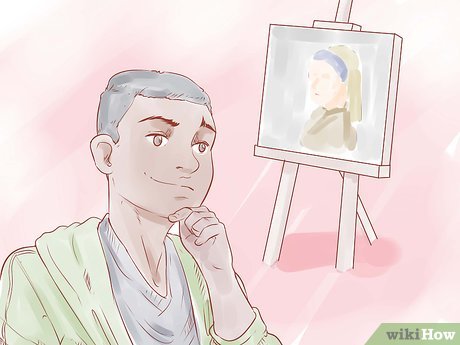









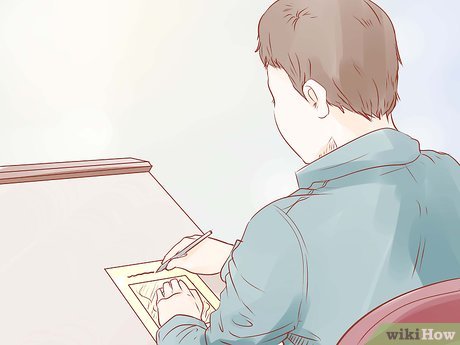
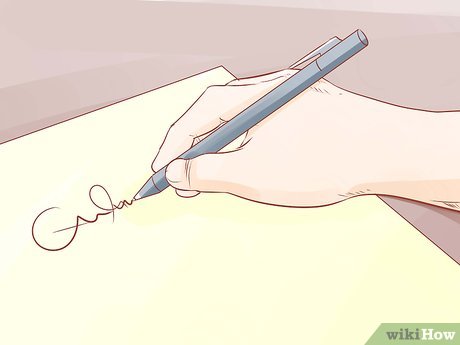






 How to change the text size for the title bar in Windows 10
How to change the text size for the title bar in Windows 10 How to Transfer a Boat Title
How to Transfer a Boat Title How to Prove Ownership of Car
How to Prove Ownership of Car How to Get a Title to an Abandoned Vehicle
How to Get a Title to an Abandoned Vehicle Title in HTML
Title in HTML Steps to edit the chart title in Excel
Steps to edit the chart title in Excel